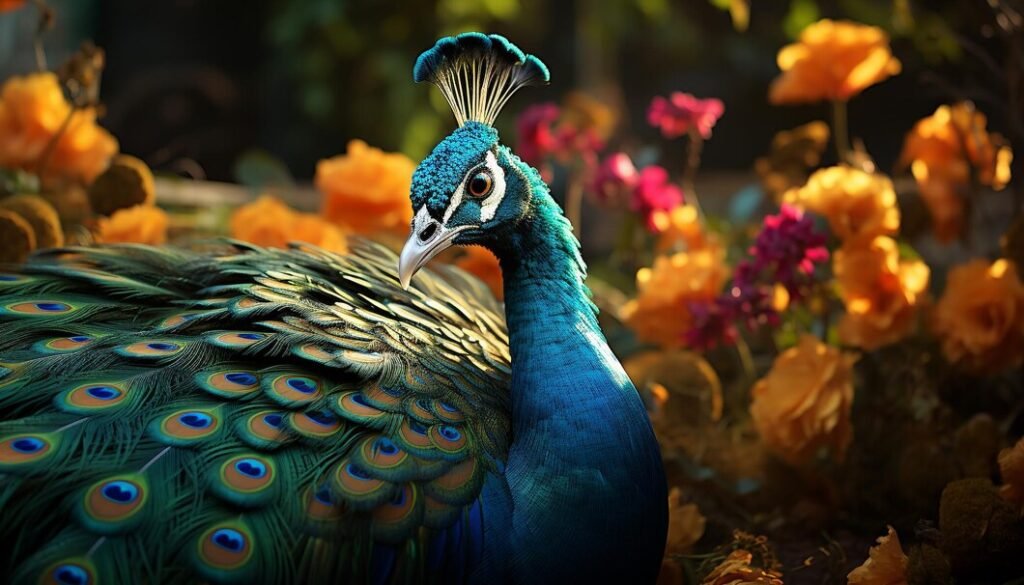The Hancock bird, scientifically known as Aethopyga hancocki, is a striking and vibrant species found in the mountainous forests of Southeast Asia. With its dazzling colors and unique behavior, this small bird captivates birdwatchers and nature enthusiasts alike. In this article, we will explore the Hancock bird’s physical characteristics, habitat, behavior, diet, breeding, and conservation status, providing a comprehensive understanding of this fascinating avian species.
Physical Characteristics of the Hancock Bird
Hancock birds are known for their stunning plumage and distinct physical traits, making them easily recognizable in their natural habitat.
Size and Shape
Hancock birds are relatively small, typically measuring between 10 to 11 centimeters in length. They have a slender body shape, which aids in their agility as they flit from flower to flower.
Plumage Colors
The male Hancock bird is particularly notable for its vibrant coloration. Its head and back are a brilliant green, while the underbelly features a bright yellow hue. The combination of these colors creates a striking contrast that is both beautiful and eye-catching. In contrast, females exhibit a more subdued coloration, with browns and yellows that provide effective camouflage among the foliage.
Bill Adaptations
One of the most distinctive features of the Hancock bird is its long, curved bill, specifically adapted for feeding on nectar. This specialized bill allows the bird to access nectar deep within tubular flowers, making it an effective pollinator.
Habitat and Distribution of the Hancock Bird
Hancock birds are endemic to the mountainous regions of Southeast Asia, thriving in specific environmental conditions.
Geographic Range
Hancock’s sunbird can be found primarily in Indonesia, Malaysia, and Borneo. These regions offer the dense forests and high-altitude environments that are essential for the bird’s survival. The species is particularly prevalent in the highlands, where it can find abundant food sources and suitable nesting sites.
Preferred Habitat
The Hancock bird prefers tropical and subtropical moist montane forests, often inhabiting elevations between 1,000 and 2,500 meters above sea level. These habitats provide not only food but also protection from predators. The dense canopy of the forest creates an ideal environment for the bird to thrive, allowing it to navigate through the trees with ease.
Behavior and Social Structure of the Hancock Bird
The Hancock bird exhibits intriguing behaviors that reflect its adaptations and social structure.
Feeding Behavior
Hancock birds primarily feed on nectar from various flowering plants. Their long bills enable them to access the nectar, which they obtain from a wide range of flowers. In addition to nectar, these birds also consume small insects and spiders, particularly when they need extra protein for breeding.
Pollination Role
As nectar feeders, Hancock birds play a crucial role in pollination. While feeding, they transfer pollen from one flower to another, facilitating plant reproduction. This symbiotic relationship between the bird and the flowers is essential for maintaining the health of the ecosystem.
Courtship Displays
During the breeding season, male Hancock birds engage in elaborate courtship displays to attract females. These displays often include melodious songs, which can be heard from a distance. Males will also showcase their colorful plumage, puffing out their feathers to emphasize their vibrant colors and physical fitness.
Breeding and Nesting Habits of the Hancock Bird
The reproductive behavior of the Hancock bird is as fascinating as its physical characteristics.
Nest Construction
After mating, the female Hancock bird takes on the responsibility of building the nest. She typically chooses a sheltered location within dense foliage, providing protection for her eggs and young. The nest is often constructed using grass, leaves, and other natural materials, carefully woven to create a secure environment.
Egg Laying and Incubation
The female usually lays a clutch of 2 to 3 eggs, which she incubates for about two weeks. During this time, the male may assist by guarding the nest and providing food for the female. Once the eggs hatch, the female continues to care for the chicks, feeding them a diet of insects and nectar until they are ready to fledge.
Conservation Status of the Hancock Bird
The Hancock bird is currently listed as Least Concern by the IUCN Red List, indicating that it has a stable population across its range. However, certain threats could impact its long-term survival.
Habitat Loss
One of the most significant threats to the Hancock bird is habitat loss due to deforestation and land conversion for agriculture. As forests are cleared for farming or urban development, the availability of suitable nesting sites and food sources diminishes.
Climate Change
Climate change poses an additional threat, as it can alter the ecosystems where Hancock birds thrive. Changes in temperature and precipitation patterns can disrupt the flowering cycles of plants, impacting the availability of nectar and ultimately affecting the bird’s feeding and breeding success.
Unique Adaptations of the Hancock Bird
Hancock birds exhibit several unique adaptations that enhance their survival in the wild.
Nectarivorous Diet
The ability to feed on nectar is a significant adaptation that allows Hancock birds to exploit a specialized niche within their ecosystem. This diet not only provides essential energy but also ensures their role as pollinators.
Coloration and Camouflage
The bright plumage of male Hancock birds serves multiple purposes. It attracts females during mating season and establishes territory among rivals. In contrast, the more subdued colors of the females help them remain hidden from predators, increasing their chances of successfully raising their young.
Fascinating Facts About the Hancock Bird

- Diverse Vocalizations: The Hancock bird is known for its melodious songs, which vary between individuals. Each male develops a unique song, making vocalization an essential part of their identity.
- Cultural Significance: In some Southeast Asian cultures, Hancock birds are admired for their beauty and grace, often depicted in local art and folklore.
- Seasonal Movements: While Hancock birds are generally resident in their habitats, some populations may exhibit seasonal movements in response to changing food availability.
- Symbiotic Relationships: The relationship between Hancock birds and flowering plants exemplifies a beautiful symbiosis, highlighting the interconnectedness of species within ecosystems.
- Potential Threats from Invasive Species: Introduced species can disrupt local ecosystems, potentially competing with native birds like the Hancock bird for food and habitat.
Conclusion
The Hancock bird is a remarkable species that adds vibrancy to the mountainous forests of Southeast Asia. With its stunning appearance, unique adaptations, and vital ecological role, this bird is a testament to the wonders of nature. However, ongoing threats from habitat loss and climate change highlight the importance of conservation efforts. Protecting the natural habitats of the Hancock bird is essential to ensuring its survival and preserving the rich biodiversity of the region.
By appreciating the beauty and significance of the Hancock bird, we can foster a greater understanding of the need for conservation and the protection of the unique ecosystems that support this enchanting species. Whether you are a birdwatcher, a nature lover, or simply curious about wildlife, the Hancock bird is a prime example of the wonders that our planet has to offer.











